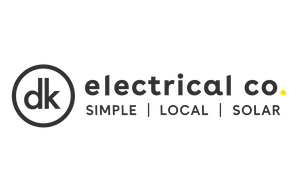

Finn's Phono Panels Review & Verdict
Finn Peacock has been a Chartered Electrical Engineer since 1998, and is ex-CSIRO
By today’s standards, Sumec Phono Solar is a small manufacturer but is part of a giant, diversified corporation. They produce high-quality, reliable solar panels that have been available here since 2010 and have a Sydney office.
Their panels have above-average hail resistance and, thanks to having heterjunction solar cells, lose less output due to heat than any panels I know of. They have 30-year performance warranties and, when installed residentially, their latest panel — the Helios Clear — has a 30-year product warranty. It also has one of the lowest rates of permitted decline in output on the market.
Because of their warranty conditions, they should be installed in shade-free locations. Due to being an above-average panel, expect to pay an above-average price.
Phono Panels: Pros & Cons
- Track record of reliability under Australian conditions
- High efficiency of up to 23.27%
- Excellent resistance to losses from heat
- Performance warranties are for 30 years and for Phono Helios Clear and Qasar panels promise an exceptionally low degradation rate
- When installed residentially, Phono Helios Clear panels have a 30 year product warranty
- Good value for money, but as they are an above average panel, they have an above average price.
About Phono
Sumec Phono Solar is a Chinese solar panel manufacturer that has been selling here since 2010. Usually, they're referred to as Phono Solar or just Phono for short. Here's some information on them that's so important I've put bullet points next to it:
- Phono Solar is part of the huge Sumec corporation and appears financially stable
- Their panels have a track record of reliability under Australian conditions
- High efficiency of up to 22.5%
- When used residentially, Phono Helios Clear panels have 30 year product warranties
- They have 30 year performance warranties with Helios Clear having one of the lowest allowed degradation rates on the market
- Australian office in Sydney
I've put more detailed info below.
Company History
Phono Solar is part of the giant Sumec corporation which was founded in 1978. Sumec is tied to the Chinese government and has its fingers in so many pies they should be written up by the Health Department. Two product lines you may have personal experience with are power tools and lawnmowers -- including electric robot ones.
Phono Solar itself didn't get started until around 2004 and began large scale manufacturing of solar panels in 2008 with a 120 megawatt panel production line. This expanded to 200 megawatts the following year and in 2014 Bloomberg listed them as a tier one manufacturer. This means financial institutions were willing to lend money to projects using their panels, which is an indirect measure of reliability.
Phono Solar arrived in Australia in 2010 and so have had a good length of time to show they can handle our environment.
Manufacturing Capacity
Phono says they've shipped a total of over 20GW of panels so far and currently have 3GW of production capacity. Because manufacturers never reach their potential maximum production, it's likely they're producing around 2GW of panels a year. These days that makes them a small producer, but it's not the size of your production run, but the quality of the panels that counts, and Phono's are pretty good.
Manufacturing Location
Phono Solar manufacturing takes place in Nanjing, a city English speakers used to call Nanking. It's on the Yangtze River and around one-and-a-half hour's express train ride from Shanghai. But try not to go there in summer because the locals refer to it as a "furnace city" and that expression has nothing to do with its industry.
Phono Solar's Helios Clear Panel
Phono has several panels on their Australian site and among them is the Helios Clear. This is a bifacial panel with 440W capacity that is 1.76m x 1.13m. Because it's their newest panel and aimed at the residential market, I'll give its details below. But you're looking for technical specifications for Phono and other panels you can find them on our solar panel comparison table.
475W Phono Quasar Solar Panel
Announced in November 2025, was Phono’s Quasar back-contact, dual-glass, bifacial solar module — the 475-Watt PS475L7GFH-18/VBH.
This boasts a module efficiency of 23.27% a temperature coefficient of -0.26%/°C, measures 1800mm x 1134mm x 30mm and weighs 23.5 kilograms.
Bifacial Panels
Phono mainly makes bifacial panels. These have glass sheets on the front and rear and can use light from either direction. When installed at an angle on a rack that lets light hit their behind, this can increase output. But in a typical rooftop solar installation the panels are placed only cm above the roof, so very little light can get in from the sides and hit the back of the panel. This results in little or no increase in output, but Phono Solar has told me their testing shows their bifacial panels result in a small benefit.
The Helios Clear panel is bifacial and has the word "Clear" in its name because you can see through the gaps between solar cells. When used for normal rooftop installation, this will let a little more light through which can reflect back and hit the rear of the panel, but it won't be enough to make any real difference to output.
High Efficiency
At this time I'm happy to describe a panel's efficiency as "high" if it's 22% or more. Both Helios Clear and Qasar panels are above this efficiency so they fit in this category.
Excellent Heat Resistance
Heat reduces solar panel efficiency and the typical modern panel has its output reduced by around 0.3% for every 1°C its temperature goes over 25°C. But Phono Helios panels only lose 0.24% and so have the best heat resistance I know of. Over a year this may result in roughly 1% to 2% more output than a panel with typical heat resistance. While this may not seem like much, every little bit helps.
They resist heat so well because they have heterojunction solar cells, which are a type of silicon sandwich. The technology is impressive, but knowing its details isn't necessary if you're simply looking to put solar on your roof.
Hail Resistance
Phono panels resist hail better than most and, in testing, the Helios and Qasar can handle impacts by 35mm hail travelling at 27.2m/s. This is equal to being hit by hail a little smaller than a ping-pong ball travelling at 98km/h, which is faster than typical hail speed.
This isn't enough to stop fist sized hail, but if a panel stops one of them, it's a lot cheaper to replace a broken solar panel than to fix a hole in your roof.
Partial Shading Not Prohibited
On page 3 of the of the current Phono Solar installation manual it says:
"Modules shall not be permanently shaded under any circumstances."
This is a normal requirement, because permanent shading on part of a module causes serious problems. Neither the installation manual or the Phono warranty document state that shading for part of the day is to be avoided, but it's still a good idea to minimise this as much as possible.
May Be Suitable For The Seaside
Phono Solar says to contact them to check if their panels are suitable for installation within 50m of the sea. From 50m to 500m they require anti-corrosion measures to be taken during installation. At over 500m, you should be right, but if you're not sure you're far enough from the shore, you can check steel external fittings in the area to see if they're more susceptible to rust than further inland.
Panel Tilt
Phono doesn't recommend a specific minimum tilt for panel installation, but any installed at less than 10° may need regular cleaning due to rain not being able to effectively clean them.
30 Year Performance Warranty
Helios Clear and Qasar panels have a 30 year performance warranty. This promises that -- in comparison to when they're new -- they will degrade in output by no more than 1% in their first year and no more than 0.375%/0.35% respectively in each subsequent year. This means they will have at least 90% of their original capacity after 25 years and at least 88.1%/88.5% respectively in their 30th year.
This is a very low rate of degradation and better than most panels on the market. While many modern panels have performance warranties that promise they'll degrade by no more than 0.4% after their first year, the Phono Helios Clear panels are just a little better.
30 Year Product Warranty For Residential Solar
Product warranties promise panels will be free of defects in materials or construction. When installed residentially, Phono Helios Clear panels have 30 year product warranties. While many quality manufacturers now offer 25 year product warranties, 30 years is longer than most.
Warranty Procedure
If you have a problem with your solar panels you should first contact your installer. But if they're no longer available, you can contact Phono directly to make a warranty claim. You can send them a message using their contact page. If you don't want to use that, you can email them at www.phonosolar.com.au, [email protected], or [email protected]. Alternatively, you can give them a ring on: (02) 8114 4516.
My Recommendation
Phono panels have above average heat and hail resistance as well as product and performance warranties of up to 30 years. Because they have demonstrated reliability under Australian conditions and have a track record of good customer support, we have no problem including them among the panels we recommend.
Check out more Phono Solar reviews and ratings from Australians below - and if you have these panels installed on your rooftop, we'd welcome your own review.
Phono has 2 solar panels in our database
Filter by:
Phono Reviews (257)
Show Most Relevant reviews from All time
- 5 star 192
- 4 star 58
- 3 star 6
- 2 star 0
- 1 star 1
View Timeline
16 August 2023
25 September 2019
03 November 2017
11 August 2016
System seems to work consistantly, but I would not use or recommend the Phono panels if I was doing it again.
Installer scratched the colorbond roof in numberous locations (discovered some time after the installation). A bit disappointing, but there is not much you can do about it.
02 November 2025
It will be interesting to see how it goes in winter.
Had 5 panels cracked by a hailstorm after only 4 months installed. The system continued to work during this time.
Replaced the panels and all is still going well.
10 November 2024
08 May 2023
On average through summer we produced 46kWh per day and on a clear day nearly 70kWh. In winter we experience a lot of shading and so far into winter (one month) we're producing 29kWh per day. We wouldn't be producing anywhere near that if we were using a string system so for our needs the micro inverters are working great.
17 December 2020
22 October 2018
29 April 2018
07 May 2017
Because I didn't have enough room on the roof for a north only installation, the panels are placed 10 on the east side and ten on the west side, to date this seems to be a good combination.
07 December 2016
Battery charge levels are nearly always over 80% and regularly get to 99%
Power bills are lower than $2 per day even with the use of the reverse cycle a/c
While I do not want to site test the hail resistance there are stated values for size and speed of the hail stones - much more valid information for East Coast Australia than information on snow loadings provided for some of the Canadian panels - at least impact damage has been considered in the design of the panels - I purposefully delayed the installation until the adjacent land was cleared of major trees that were dropping branches and other debris on my roof
15 October 2016
11 July 2025
09 July 2025
An incentive was offered by Expert Electrical for this review. Learn more here.
24 March 2025
06 August 2024
02 May 2024
27 April 2024


































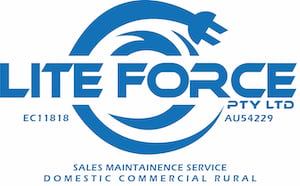








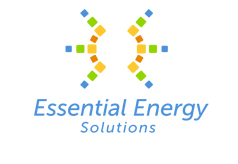




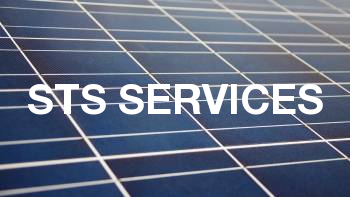
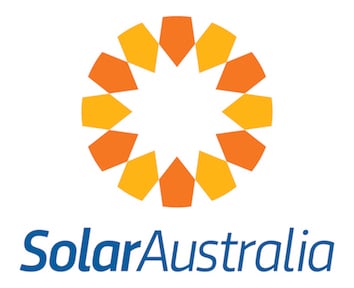
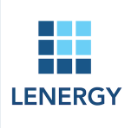






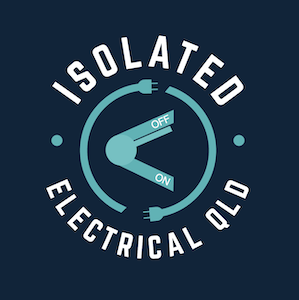



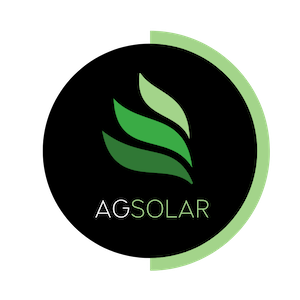


 (1).jpg)
